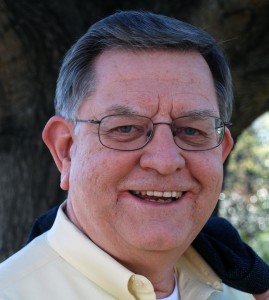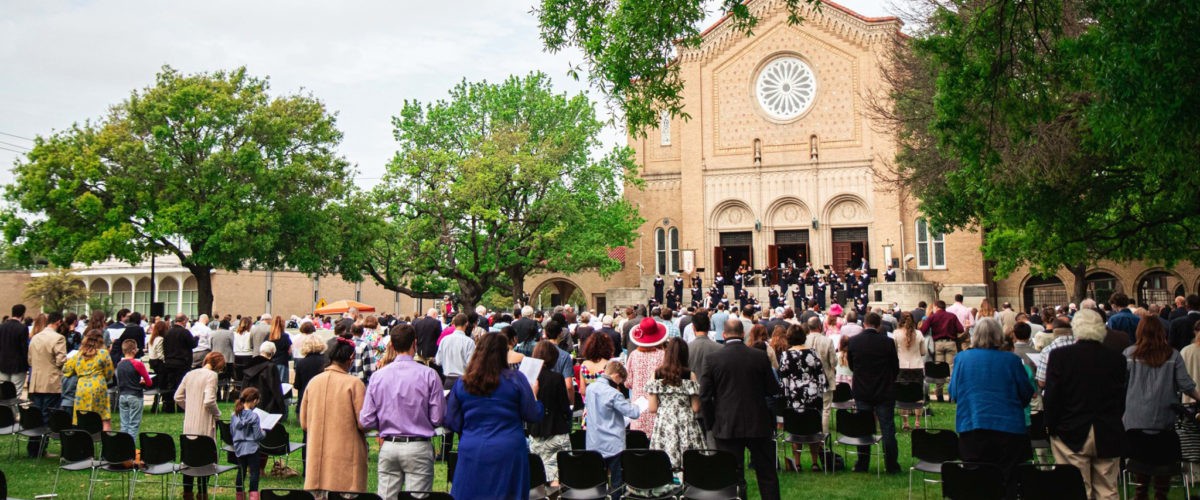New CDC guidelines and a growing number of church members being vaccinated are suddenly opening new possibilities for churches that have been closed to in-person gatherings for 14 months.
“The arrival and availability of the vaccine has been a welcomed unseen guest among those seeing each other in person for the first time since the pandemic began,” said Kyle Tubbs, coordinator for CBF Oklahoma. “The vaccine has opened doors of new possibilities in most of our churches. While one size does not fit all with regard to where and how churches are gathering, there are some common trends among churches meeting in person on Sundays: social distancing, masks, and an overall thoughtful culture of being aware of others.”
“The vaccine has opened doors of new possibilities in most of our churches.”
New guidelines released by the Centers for Disease Control on April 29 listed “attend a full-capacity worship service” as something safe for vaccinated people to do if wearing masks. However, attending such a full-capacity service is still deemed unsafe for anyone who is not vaccinated.
Initial reports from those who work closely as consultants with multiple churches indicate a growing return to some form of in-person gatherings. And the openness to such activities appears to be growing by the day as more Americans are vaccinated and COVID-19 infection and death rates drop.

Kyle Tubbs
But that doesn’t mean online options are going away, Tubbs said. “Some of our churches have made their way back into their buildings while others are meeting outside. Almost all our churches are utilizing online streaming for those still connecting from home and are likely to continue to do so indefinitely. There is an intentional spirit of inclusion for those attending virtually.”
As universities end their terms and public schools near the end of the academic year, churches that had not previously reopened are rolling out transitional plans for the summer, often with an eye toward full schedules beginning in late summer or early fall.

Carol Childress
“Transitional” is the right word, noted veteran church consultant Carol Childress, who stays in touch with many of her colleagues working in churches across the country.
“My greatest concern is that pastors and other church leaders are not addressing the transition involved in all the changes they are being forced to make,” she explained. “Change is an event — large or small — and the social, emotional and psychological processing of the change is transition.”
Just as quickly transitioning to virtual worship and small groups last year took an emotional toll on church leaders, so the return to in-person and hybrid settings will take another toll, she predicted. “It is the difference between processing changes in a healthy and successful way or simply adding to existing stress and dysfunction of the situation.”
And despite the joy of regathering, there’s still a lot of uncertainty in the air.
“Pastors are uneasy because no one really knows what the post-COVID life for congregations will look like,” Childress said. “The only sure thing is that it will be different from what it was and we will not be returning to the past. I believe a hybrid environment is here to stay.”
“Pastors are uneasy because no one really knows what the post-COVID life for congregations will look like.”
Yet maintaining a hybrid presence and keeping up with new people from far and wide who have joined churches virtually during the pandemic presents a challenge all its own, she added. “The essential key is relationships — real, human, authentic one-on-one relationships. Digital community cannot substitute for that. And there is a lot of research out there to validate that statement.”
Childress cited four traits that will help churches successfully navigate into a post-COVID context: (1) an emotionally healthy pastor, (2) an already existing healthy internal culture, (3) an infrastructure for community built on anything other than the traditional Sunday school model, and (4) already communicating well internally.

George Bullard
For all this second wave of transition to be happening as summer approaches is both a blessing and a curse, said George Bullard, a veteran church consultant based in South Carolina, where he previously was an associational director of missions and state convention leader.
“Summer is a mixed bag of activities. For major on-site and off-site events churches had to make go and no-go decisions before they knew how open things would be this summer,” he explained. “So, some are going ahead with full events, some are not, and some are doing limited events with numbers based on social distancing.”
Whatever path a church takes, a key issue will be recruiting workers, he predicted. “Even churches with a lot of families with children still have a high percentage of leadership and workers age 60 or more, and that is impacting what they can do.”
During the summer, he expects to see churches still using outdoor venues whenever possible and limiting indoor events. And those indoor events are likely to still be dependent on masks in most churches.
Bullard also sees a double-edged sword in how attendance patterns have shifted over the past 14 months. “The 25% of the previous attendance churches do not see coming back yet — if ever — are being replaced by an increase in first-time guests and more people than expected joining than typical this spring.”
Previous research during the pandemic has shown — surprisingly — that most American churches have done fine financially. That’s partly because of reduced expenses due to canceled programs and limited facilities use; for example, churches not meeting in person have experienced dramatic drops in utility bills.
And, Bullard said, it appears that the 75% of congregants that have kept attending virtually represent the bulk of regular givers. “The 25% not coming was not giving money to the church anyway.”
Another sign of return to normal is that specialized church ministries such as weekday preschools are planning to reopen in the fall.
Based on the ever-changing situation of the past year, church leaders may be wary of making hard-and-fast plans yet, Tubbs added. “Our churches remain flexible and adaptive as recommendations and guidelines from the CDC evolve, as people continue to get vaccinated, and as available data teaches us about the vaccine’s effect on variants. Another spike or wave could change course once again.”
Related articles:
Your church after COVID: Restart, refresh or relaunch? | Opinion by Bill Wilson
What if they don’t all come back to church? | Opinion by Jason Koon
Most churchgoers say they’ll return to in-person worship after COVID
What do we do now? The blessing and curse of COVID to the church | Opinion by Keli Rugenstein


